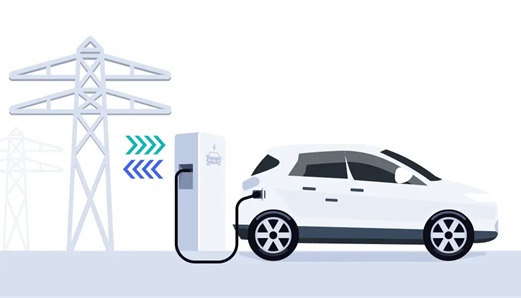


Vehicle-to-Grid (V2G): Powering a Smarter Energy Future
Vehicle-to-Grid (V2G): Powering a Smarter Energy Future
As a leading EV charger manufacturer in China, Topper Company provides dependable electric vehicle charging equipment and comprehensive charging solutions.
As the global shift toward renewable energy accelerates and electric vehicles (EVs) become increasingly mainstream, Vehicle-to-Grid (V2G) technology is emerging as a transformative solution. It allows EVs to act not only as transportation tools but also as mobile energy assets that support the electric grid.
V2G enables a two-way flow of electricity between EVs and the power grid. While traditional EV charging draws power from the grid, V2G also allows vehicles to return stored electricity back to it. This bi-directional energy exchange is managed by smart chargers and software, making EVs part of a decentralized, flexible energy network.
Though often confused with general bi-directional charging, V2G specifically refers to supplying electricity from an EV to the grid—especially during times of high demand.
The process is simple in concept:
Charging: The EV battery charges during off-peak hours when electricity is cheaper and more abundant.
Discharging: During peak hours, the EV can send electricity back to the grid to help stabilize demand.
Recharging: The EV recharges afterward to ensure it’s ready for driving.
This exchange is coordinated by algorithms that prioritize the driver’s mobility needs while optimizing grid performance.
1. Grid Stability
V2G helps balance supply and demand, particularly during peak hours, reducing the risk of blackouts and deferring costly infrastructure upgrades.
2. Energy Market Optimization
Utilities can treat EVs as distributed storage units, enabling better integration of renewable energy and load management.
3. Financial Incentives
EV owners, especially fleet operators, can earn money or reduce electricity costs by selling excess energy back to the grid.
4. Environmental Gains
By storing and dispatching renewable energy, V2G reduces reliance on fossil fuels and helps lower emissions.
5. Value for Automakers
Manufacturers can differentiate their EVs with V2G features, appealing to eco-conscious consumers and businesses.
V2G is a cornerstone of the emerging smart grid—a modern, responsive power system. Through “swarm storage,” networks of EVs can quickly respond to demand spikes or renewable energy variability. This enhances efficiency, reduces waste, and supports a greener energy mix.
Currently, a few models support V2G, notably:
Nissan Leaf / e-NV200
Mitsubishi Outlander PHEV / i-MiEV
These typically use the CHAdeMO standard, though other standards and vehicles are expected to follow.
V2G can also:
Provide backup power during outages
Support peak shaving in buildings
Generate revenue for EV owners participating in energy markets
Despite its promise, V2G faces challenges:
Infrastructure gaps (few compatible chargers)
Battery degradation concerns
Lack of regulatory support and standardization
Low consumer awareness
Governments and companies across the EU, U.S., and Asia are investing in V2G pilot programs. As EV adoption grows and technology matures, V2G is poised to become a key enabler of a low-carbon energy system.
V2G represents a major leap in energy and transport integration. It empowers EVs to support the grid, drive revenue, and enable renewable energy use. As part of a smarter, cleaner energy future, V2G is more than a concept—it’s a vital step toward global sustainability.Know more about Google SEO Directory
